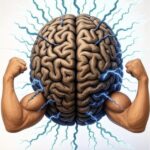This post explores the perspective and personal opinions of Kevin Stillwagon, a 67-year-old retired chiropractor and airline captain who identifies as an anti-vaxxer. His article and video (click here) reveal that he has never received vaccines and publicly opposes vaccines and medical mandates. His views are shaped by his personal experiences, professional background, and understanding of the immune system. This post covers his backstory, reasons for avoiding vaccines, arguments about immunity and antibodies (including antibody structure and the effects of vaccine injection), concerns about vaccine safety, and claims about health outcomes in vaccinated versus unvaccinated populations.
Background Story
Kevin Stillwagon, aged 67, claims to be in excellent health despite never being vaccinated. He has traveled extensively worldwide as an airline captain. Stillwagon worked as a successful chiropractor before retiring and later became an airline captain. In summer 2020, he was forced to retire early due to his refusal to comply with a mandate requiring face masks as part of his uniform. This event prompted him to speak out against medical mandates, including mask requirements for children and what he predicted would be mandatory vaccinations, which later occurred.
He began addressing these issues at school board and county commissioner meetings. Some of his speeches, which he calls “rants,” gained popularity online, encouraging him to continue sharing his views. Stillwagon aims to inform others about what he believes are the dangers of vaccines and medical mandates.
Reasons for Avoiding Vaccines
Stillwagon’s decision to remain unvaccinated stems from his father, a chiropractor, who believed the body’s natural defenses suffice to protect against infections. Influenced by this view, Stillwagon chose never to receive vaccines and, after discussions and agreement with his wife, extended this decision to their daughter. He argues that true protection against infections comes first, and most effectively, from the body’s epithelial barrier—the physical layer (skin and mucous membranes) separating the body’s interior from the external environment, rather than antibodies produced by injected vaccines, which bypass that barrier. He highlights the role of natural cellular protection, particularly T-cells, which he claims are provided at birth and effectively prevent infections. Stillwagon believes this natural immunity eliminates the need for vaccines.
Views on Immunity and Antibodies
Stillwagon argues that vaccines are based on a flawed scientific premise because they bypass the immune system’s outer layers, leading to a different, weaker, and less effective immunity compared to natural infections. He explains that the immune system’s first line of defense is the epithelial barrier, which includes the skin and mucous membranes lining the respiratory, digestive, and other tracts. These barriers are equipped with specialized immune cells, such as dendritic cells and macrophages, that secrete mucus containing antimicrobial substances to trap and neutralize pathogens before they enter the body. This makes it the most important part of the immune system.
In natural infections, pathogens encounter this barrier and must breach it to cause infection. For example, a respiratory virus like influenza enters through the nasal passages, where it interacts with mucosal immune cells. This interaction triggers the production of secretory IgA antibodies, which are secreted into the mucosal lining (e.g., in the nose or gut). These antibodies, Stillwagon claims, are highly effective at neutralizing pathogens at the point of entry, preventing infection. The immune system also generates memory cells during natural infections, which “remember” the entire pathogen, enabling a rapid and robust response if exposed again. This process, he argues, produces long-lasting, comprehensive immunity because the immune system encounters the pathogen in its complete form, including all its proteins and structures, in the natural steps, starting with the epithelium, making natural immunity the most robust and long-lasting form.
In contrast, Stillwagon asserts that vaccines are administered by injection, typically intramuscularly or subcutaneously, using a needle to deliver a foreign substance—often a fragment of a pathogen or an inactivated form—directly into the body’s internal environment. This method, bypasses the epithelial barrier entirely, ignoring the immune system’s natural entry points, skipping all those steps, resulting in a weaker, artificial immunity that doesn’t receive the benefits of those most important initial steps. The injected substance does not interact with the mucosal immune system or the specialized cells in the skin and mucous membranes that are designed to process pathogens entering naturally. Instead, it enters the bloodstream or lymph, where it stimulates the production of serum antibodies only, which circulate in the blood and lymph.
Stillwagon argues that these serum antibodies, including serum IgA, are fundamentally different from epithelial secretory IgA antibodies produced during natural infections. Additionally, these serum antibodies remain inside the body and cannot be secreted into the mucosal lining, where most pathogens first attempt to enter. As a result, vaccine-induced antibodies are unable to prevent infections at the (most important) mucosal level, only reacting to pathogens after they have already breached the body’s defenses (because there are none produced from injected vaccines).
Furthermore, because vaccines often use only a part of the pathogen (e.g., a single protein or inactivated component), the immune system does not encounter the full pathogen, leading to “suboptimal” antibodies. These antibodies lack the robustness and memory of those produced naturally, resulting in weaker, less durable, and shorter-acting immunity. He claims that only natural infections, exposing the immune system to the entire pathogen through the epithelial barrier, produce complete antibodies with memory for lifelong protection.
Detailed Explanation of Antibody Structure
Stillwagon describes antibodies as Y-shaped molecules, a critical feature in his explanation of their function, particularly in the context of vaccine-induced issues. The antibody’s Y shape consists of two main regions:
-
The Arms of the Y (Fab Regions): The two upper arms of the Y, known as the antigen-binding fragments (Fab), are the “business end” of the antibody. Each arm contains a specific binding site that recognizes and attaches to a unique part of a pathogen, called an antigen. This binding is highly specific, like a key fitting a lock, allowing the antibody to latch onto the pathogen. Both natural and vaccine-induced antibodies can bind to pathogens, but the effectiveness depends on the quality of the antibodies produced. This quality determines the antibody’s effectiveness, durability, and sustainability. A clear example of this is the COVID shots, which do not prevent infection – or reinfection – and have a rapidly waning antibody result, versus a natural COVID infection, which does prevent reinfection, thanks to the robust, durable. and long-lasting antibodies produced.
-
The Stem of the Y (Fc Region): The lower part of the Y, known as the fragment crystallizable (Fc) region, is the “signaling end” or tail. This region interacts with immune cells, such as macrophages or neutrophils, to direct the immune response. The Fc region sends signals that instruct these cells on how to handle the pathogen attached to the Fab regions. For example, it may signal the cell to engulf and destroy the pathogen or, in some cases, to take different actions, which is problematic with vaccine-induced antibodies.
The Y shape is crucial because it allows antibodies to bridge pathogens and the immune system. The Fab regions grab the pathogen, forming an antigen-antibody complex, while the Fc region communicates with immune cells to orchestrate the response. Stillwagon emphasizes that the structure is consistent across antibodies, but the signaling outcome varies depending on whether the antibodies are “robust” (from natural infections) or “suboptimal” (from vaccines). Essentially, natural immunity creates a strong, thick, long-lasting Y, but vaccine immunity creates a weak and thin Y that is less effective and disappears quickly (especially in the example of the COVID shots).
ADE Concerns About Vaccine-Induced Antibodies
Stillwagon warns that vaccine-induced antibodies can cause two harmful effects: antibody-dependent enhancement (ADE) of infection and ADE of disease.
-
ADE of Infection: Stillwagon explains that suboptimal antibodies bind to pathogens via the Fab regions, as intended. However, the Fc region (the tail of the Y) sends incorrect signals to immune cells. Instead of instructing the cells to destroy the pathogen, the Fc region may signal the cells to engulf the antigen-antibody complex and replicate the pathogen inside the cell. These replicated pathogens are then released into the bloodstream, spreading the infection more easily. Stillwagon cites individuals who receive multiple COVID-19 booster shots yet contract the virus repeatedly, such as Joe Biden, who he claims to have had six boosters, yet was diagnosed with COVID multiple times.
-
ADE of Disease: This occurs when suboptimal antibodies worsen disease symptoms. Stillwagon describes how multiple antibodies may bind to a single pathogen, with their Fc regions collectively triggering the complement cascade—a part of the immune system reserved for severe infections. The complement cascade involves approximately 15 quintillion proteins in the blood and lymph, present from birth, that change shape in a chain reaction. The Fc regions initiate this cascade by signaling one of these proteins to start, leading to the formation of a membrane attack complex. This complex aggressively destroys cells with foreign proteins but can also damage nearby healthy cells, causing excessive inflammation. White blood cells, like neutrophils are drawn to the site, releasing toxic cytokines that cause further cellular damage. This inflammation can lead to conditions like myocarditis (heart inflammation) or multi-inflammatory syndrome (MIS), which can affect adults (MIS-A) or children (MIS-C), resulting in disability and even death. His claims appear to be validated with the recent announcement from the FDA that all mRNA vaccines will soon be required to carry a warning label about this myocarditis risk.
Critique of Vaccine Safety and Testing
Stillwagon claims some medical professionals are questioning vaccine safety, particularly after the COVID-19 vaccine, which he describes as a failed mRNA-based gene therapy platform. He alleges that childhood vaccines recommended by the Centers for Disease Control and Prevention (CDC) lack proper safety testing, specifically true placebo-controlled trials, which always use an inert substance like saline. Instead, he says, vaccines were compared to other vaccines assumed to be safe, which violates the rules of objective safety testing.
He cites the hepatitis B vaccine, claiming its safety trial lasted only five days, insufficient to detect potential neurological damage in infants or any long-term effects. Stillwagon argues that these vaccines are neither safe nor effective, challenging claims that they prevent diseases or reduce symptoms. Further, hepatitis B can only be acquired through sexual intercourse or sharing a needle with an infected person, and the vaccine only lasts 5 years, so what are the chances of either of these things happening to a child before they turn 5? A third way it can be acquired is from a mother who has hepatitis B, but all mothers are tested for it when they enter the hospital, with over 99.9% testing negative.
Health Outcomes in Vaccinated vs. Unvaccinated Populations
Stillwagon points to data suggesting that countries with lower vaccination rates have better health outcomes. One only needs to observe the health outcomes of the Amish community to see his point, but using sources like Our World in Data also shows that heavily vaccinated countries, such as the United States, have drastically higher infant mortality and childhood chronic disease rates compared to less-vaccinated countries. He notes that the U.S. requires many vaccines for school entry, though religious exemptions are available in most states, except California, New York, Maine, and Connecticut.
He also references the COVID-19 pandemic, claiming that countries with high vaccination rates had higher mortality than less-vaccinated nations like Haiti or parts of Africa. Stillwagon suggests these outcomes indicate that vaccines may not improve population health and could contribute to adverse effects.
The CDC vaccination schedule has expanded drastically since vaccine makers were given blanket immunity from prosecution with the NCVA law passed in 1986. There were only 9 shots on the CDC lifetime childhood schedule in 1986, but now there are over 70 shots on that schedule.
Conclusion
Kevin Stillwagon’s perspective challenges mainstream views on vaccines and medical mandates. He bases his stance on his personal health, professional experiences, and a deep understanding of the immune system, particularly the differences between natural and vaccine-induced immunity. He raises concerns about vaccine safety, testing, and health outcomes, advocating for natural infections and immune system support for vulnerable populations. This lesson presents his views as a case study in alternative health perspectives, encouraging people to evaluate scientific claims and public health policies critically (and to do their own research).









